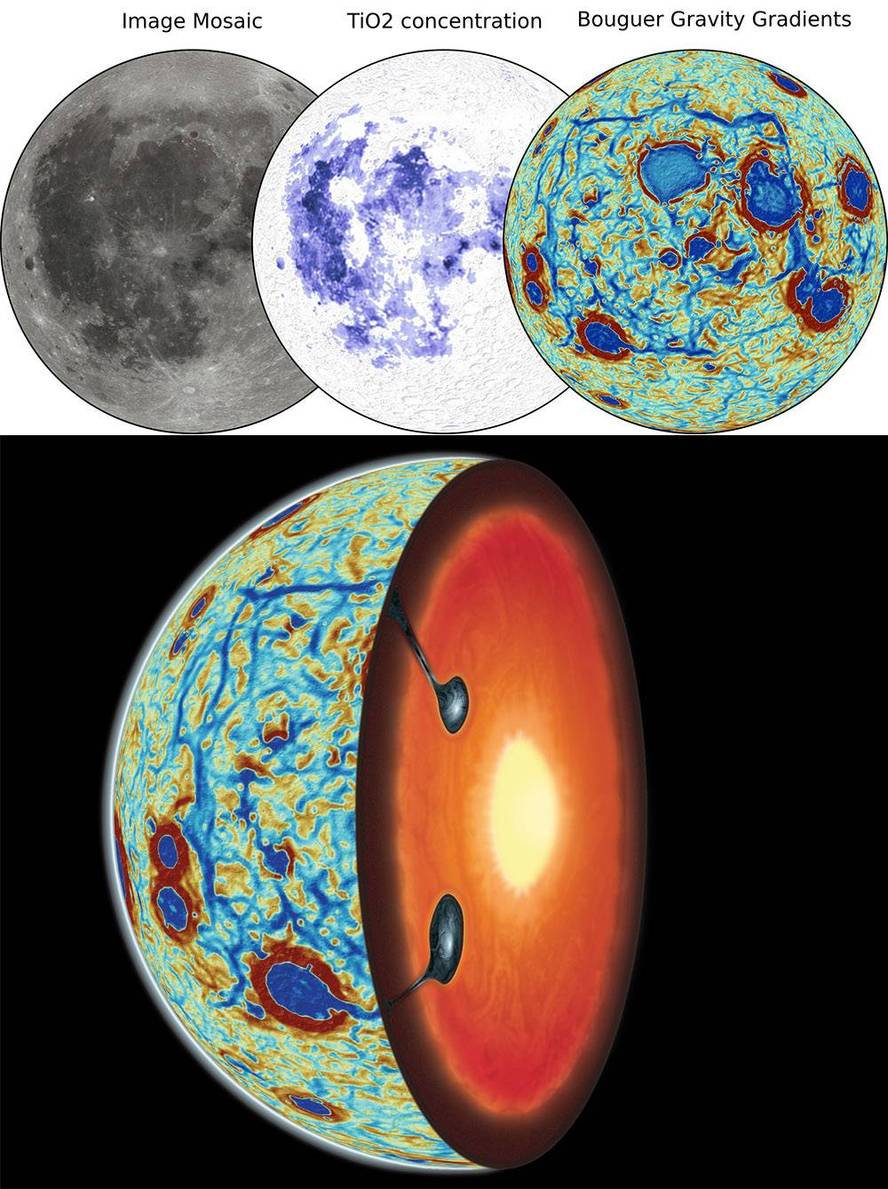They present a model to understand how the lunar mantle was revolutionized.

Scientists from China and the US present a model to explain the presence of titanium rocks near the lunar surface and the anomalies measured in the gravitational field. According to the model, the lunar mantle came back, 4200 million years ago. The study has been published in the journal Nature Geoscience.
Most scientists support the hypothesis that the Moon emerged as a result of a clash. Four and a half billion years ago, a large body hit the Earth and the Moon formed by compacting the material that was released. There are several interpretations of subsequent geological history.
According to one of them, the crystallization of the materials of the Moon seems to last hundreds of millions of years, crystallizing in heavy minerals like the ilmenite, the last rich magma. The ilmenite has a lot of titanium and is denser than the materials below. So it sank and the underlying materials went to the surface. Then, as she approached the nucleus, she melted again and returned to the surface. This explains why the rocks close to the surface are rich in titanium.
One of the researchers who participated in the model now presented, in another study previously conducted, concluded that this titanium rich layer migrated first to the visible face of the moon, probably due to a collision that occurred in the occult part. And then it sank indoors like a leap of water was treated. The layers thus generated coincide with the data of the gravitational field measurements.
In 2011 and 2012, during the GRAIL mission, two NASA boats measured the gravitational field and saw some abnormalities. In their current studies, data from the gravitational field coincide with the hypothesis of distribution of the ilmenite. In fact, they've shown that these anomalies come from titanium rich rocks. They hope that further evidence in favour of this scenario will be gathered in future missions.





